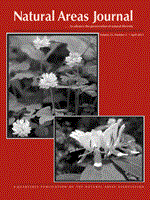We studied great gray owls (Strix nebulosa Forster) in Yosemite National Park, California, measuring variables that could potentially influence patterns of occurrence and conservation of this stateendangered species. We found that owl presence was closely tied to habitat (red fir (Abies magnified A. Murray) and the abundance of meadows), prey, and snags across the landscape. We also found that indicators of human recreational activities negatively influenced owl distribution and habitat use. Great gray owls appear to prefer mid-elevation red fir forest with meadows that are drier and more productive in terms of small mammal populations. That these areas also have the highest human activity presents a paradox, both for individual owls and for the future conservation and management of this California endangered species. The extent to which human recreation in natural areas affects animal behavior, species distribution, and productivity is a growing issue in natural area management. We present information that will allow land managers to better understand how existing natural resources, coupled with human recreation, influence the distribution and habitat use of the great gray owl.
How to translate text using browser tools
1 July 2013
Great Gray Owls (Strix nebulosa) in Yosemite National Park: On the Importance of Food, Forest Structure, and Human Disturbance
Riper Charles van,
Joseph J. Fontaine,
Jan W. van Wagtendonk
ACCESS THE FULL ARTICLE

Natural Areas Journal
Vol. 33 • No. 3
July 2013
Vol. 33 • No. 3
July 2013
distribution
great gray owl
habitat selection
human disturbance
meadows
prey selection
Yosemite National Park




